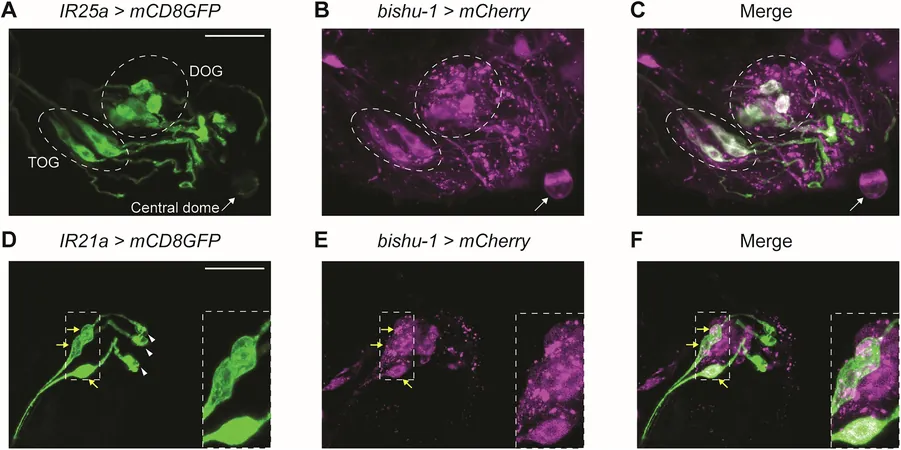
Revolutionary Discovery: Lipid Enzyme Revealed as Key Player in Temperature Sensing for Fruit Fly Larvae!
2025-05-29
Author: Arjun
Unlocking the Secrets of Temperature Sensation
In the animal kingdom, sensing environmental temperatures is vital for survival, particularly for delicate creatures like fruit fly larvae. These insects have developed a sophisticated thermosensory system capable of detecting temperature changes with astonishing precision, even within a milli-degree.
The Game-Changer: A Lipid Enzyme Unveiled
A groundbreaking study has shed light on the inner workings of this remarkable thermosensation. Researchers have identified a lipid enzyme that plays a crucial role in maintaining thermal receptor functions, ultimately regulating the larvae's responses to cool temperatures. This enzyme, linked to the expression of thermal receptors, is set to change our understanding of how these tiny larvae perceive their environment.
Understanding the Mechanics Behind Cool Temperature Avoidance
The focus of this study was on specific thermal receptors known as ionotropic receptors (IRs), particularly IR25a and IR21a, which reside in neurons of the larval heads called dorsal organ cool cells (DOCCs). These receptors are responsible for mediating the larvae's aversion to cooler temperatures. Although it was recognized that changes in the expression of IR25a and IR21a influenced temperature sensitivity, the precise mechanisms had remained a mystery until now.
The Surprising Role of the Bishu-1 Gene
Enter Takaaki Sokabe and Xiangmei Deng from the Exploratory Research Center on Life and Living Systems (ExCELLS). They uncovered a monoacylglycerol acyltransferase (MGAT)-coding gene named bishu-1, which proves essential for maintaining the transcription levels of IR25a and IR21a. The discovery was unexpected, as MGATs are primarily associated with energy storage in the liver. Thus, the researchers whimsically named the gene 'bishu,' a Chinese term that means 'summering,' reflecting the larvae's behavior as they actively escape from heat.
Bishu-1: A Unique Regulator
Unlike other lipid enzymes that interact directly with sensory receptors, bishu-1 regulates gene expression. It influences the expression of the transcription factor broad, which binds to the regulatory region of the IR25a gene. Astonishingly, overexpressing broad was sufficient to correct the behavioral deficits observed in bishu-1 mutant larvae, demonstrating its critical role in cooling responses.
Implications for Sensory Processing in Humans
This pivotal research may pave the way for novel lipid-mediated treatments aimed at enhancing thermosensation and other sensory systems in humans. As researchers delve deeper, they plan to explore the implications of other MGAT-coding genes clustered within the genome, potentially unraveling more intricate links between lipid metabolism and sensory perception. This discovery isn’t just about fruit flies; it could change the game for understanding sensory processing across species!



 Brasil (PT)
Brasil (PT)
 Canada (EN)
Canada (EN)
 Chile (ES)
Chile (ES)
 Česko (CS)
Česko (CS)
 대한민국 (KO)
대한민국 (KO)
 España (ES)
España (ES)
 France (FR)
France (FR)
 Hong Kong (EN)
Hong Kong (EN)
 Italia (IT)
Italia (IT)
 日本 (JA)
日本 (JA)
 Magyarország (HU)
Magyarország (HU)
 Norge (NO)
Norge (NO)
 Polska (PL)
Polska (PL)
 Schweiz (DE)
Schweiz (DE)
 Singapore (EN)
Singapore (EN)
 Sverige (SV)
Sverige (SV)
 Suomi (FI)
Suomi (FI)
 Türkiye (TR)
Türkiye (TR)
 الإمارات العربية المتحدة (AR)
الإمارات العربية المتحدة (AR)